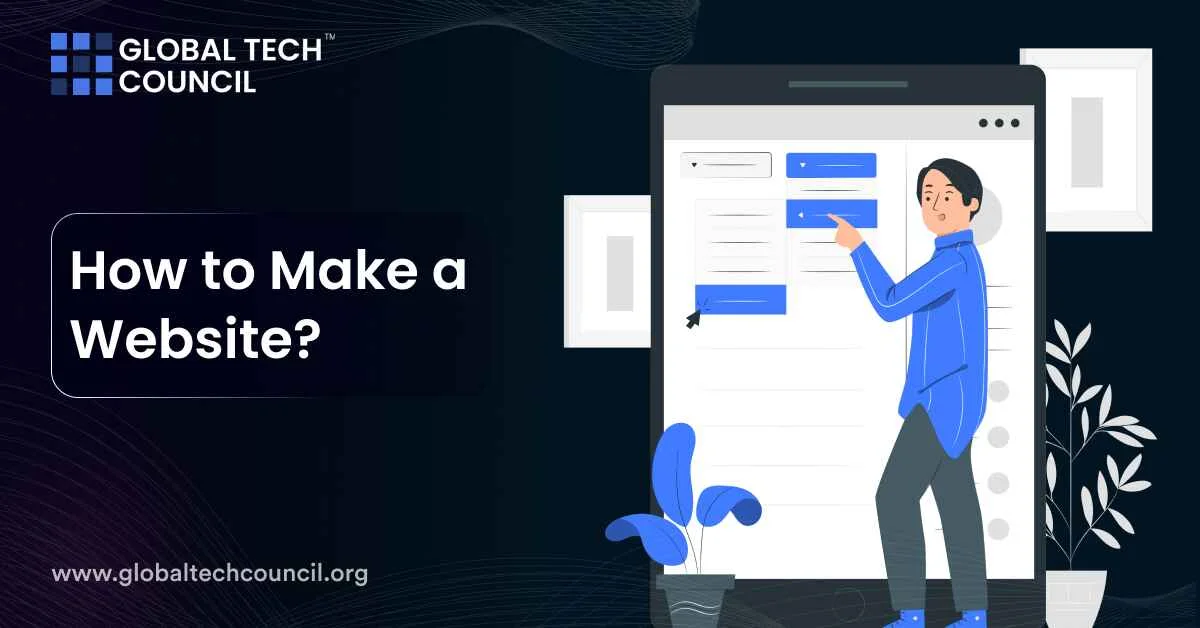
In today’s digital age, having a website is essential for individuals, businesses, and organizations looking to establish an online presence and reach a wider audience. Fortunately, creating a website has become more accessible and user-friendly with the availability of website builders and content management systems (CMS) like WordPress, Wix, and Squarespace. In this beginner’s guide, we’ll walk you through the step-by-step process of making a website from scratch.
Learn More: Certified Python Developer™
1. Define Your Purpose and Goals
Before you start building your website, it’s essential to define its purpose and goals. Consider the following questions:
- What is the primary objective of your website? (e.g., promoting a business, showcasing a portfolio, sharing personal blog posts)
- Who is your target audience, and what content or features do they expect to find on your website?
- What specific actions do you want visitors to take when they visit your site? (e.g., making a purchase, contacting you for more information, subscribing to a newsletter)
By clarifying your website’s purpose and goals upfront, you can design and structure your site to effectively meet the needs of your audience and achieve your desired outcomes.
2. Choose a Domain Name and Web Hosting
Next, you’ll need to choose a domain name (i.e., your website’s address on the internet) and a web hosting provider (i.e., the service that stores and serves your website’s files). Here are some tips for selecting a domain name and web hosting:
- Choose a domain name that is relevant to your website’s content or purpose, easy to remember, and easy to spell.
- Select a reputable web hosting provider that offers reliable servers, good customer support, and competitive pricing plans.
- Consider factors such as storage space, bandwidth, uptime guarantees, and scalability when choosing a hosting plan that meets your needs.
3. Select a Website Building Platform
Once you have your domain name and web hosting sorted, it’s time to choose a website building platform. There are several options available, ranging from beginner-friendly website builders to more advanced content management systems (CMS). Some popular platforms include:
- WordPress: A versatile CMS that powers over 40% of websites on the internet, known for its flexibility, scalability, and extensive plugin ecosystem.
- Wix: A user-friendly website builder that offers drag-and-drop functionality and customizable templates for creating visually stunning websites.
- Squarespace: A design-centric platform that provides beautifully designed templates and integrated tools for building professional websites, portfolios, and online stores.
Consider your technical expertise, design preferences, and desired features when selecting a website building platform that best suits your needs.
Learn More: Certified React Developer™
4. Design Your Website
With your website building platform chosen, you can now start designing your website. Here are some tips for creating an attractive and user-friendly design:
- Choose a visually appealing template or theme that aligns with your brand and website’s purpose.
- Customize the design elements, such as colors, fonts, images, and layout, to create a unique and cohesive look for your website.
- Ensure that your website is mobile-responsive, meaning it adapts and displays properly on various devices, including smartphones, tablets, and desktop computers.
- Optimize the user experience by organizing content logically, providing clear navigation menus, and incorporating calls-to-action (CTAs) to guide visitors through your site.
5. Create and Publish Content
Once your website’s design is in place, it’s time to create and publish content. This may include:
- About Us: Provide information about yourself, your business, or your organization to introduce visitors to who you are and what you do.
- Services or Products: Describe the products or services you offer, including pricing, features, and benefits.
- Blog: Share informative articles, news updates, or personal insights related to your niche or industry to engage and educate your audience.
- Contact Information: Make it easy for visitors to get in touch with you by including contact details, such as email addresses, phone numbers, and social media links.
6. Optimize for Search Engines
To increase your website’s visibility and attract organic traffic, it’s essential to optimize it for search engines. Here are some SEO best practices to follow:
- Conduct keyword research to identify relevant keywords and phrases related to your content and target audience.
- Optimize your website’s meta titles, descriptions, and headings to include target keywords and improve search engine rankings.
- Create high-quality, valuable content that addresses the needs and interests of your target audience and encourages engagement and sharing.
- Build backlinks from reputable websites to improve your site’s authority and credibility in the eyes of search engines.
7. Test and Launch Your Website
Before launching your website to the public, it’s crucial to test it thoroughly to ensure that everything is functioning correctly and looks the way you want it to. Here are some testing steps to consider:
- Check for broken links, missing images, and other errors by navigating through your website’s pages and features.
- Test your website’s compatibility and responsiveness across different web browsers and devices to ensure a consistent user experience.
- Ask friends, family members, or colleagues to review your website and provide feedback on its design, usability, and content.
Once you’re confident that your website is ready for the world to see, it’s time to launch it! Make any final adjustments or tweaks as needed, and then publish your website to your chosen domain name and web hosting provider.
Learn More: Certified Node.js Developer™
Conclusion
Creating a website may seem like a daunting task, but with the right tools, resources, and guidance, it’s entirely achievable, even for beginners. By following the steps outlined in this guide, you can create a professional-looking website that effectively communicates your message, engages your audience, and helps you achieve your goals online. Whether you’re building a personal blog, portfolio website, or online store, the process of making a website is an exciting journey of creativity, learning, and growth. So roll up your sleeves, dive in, and start building your dream website today!